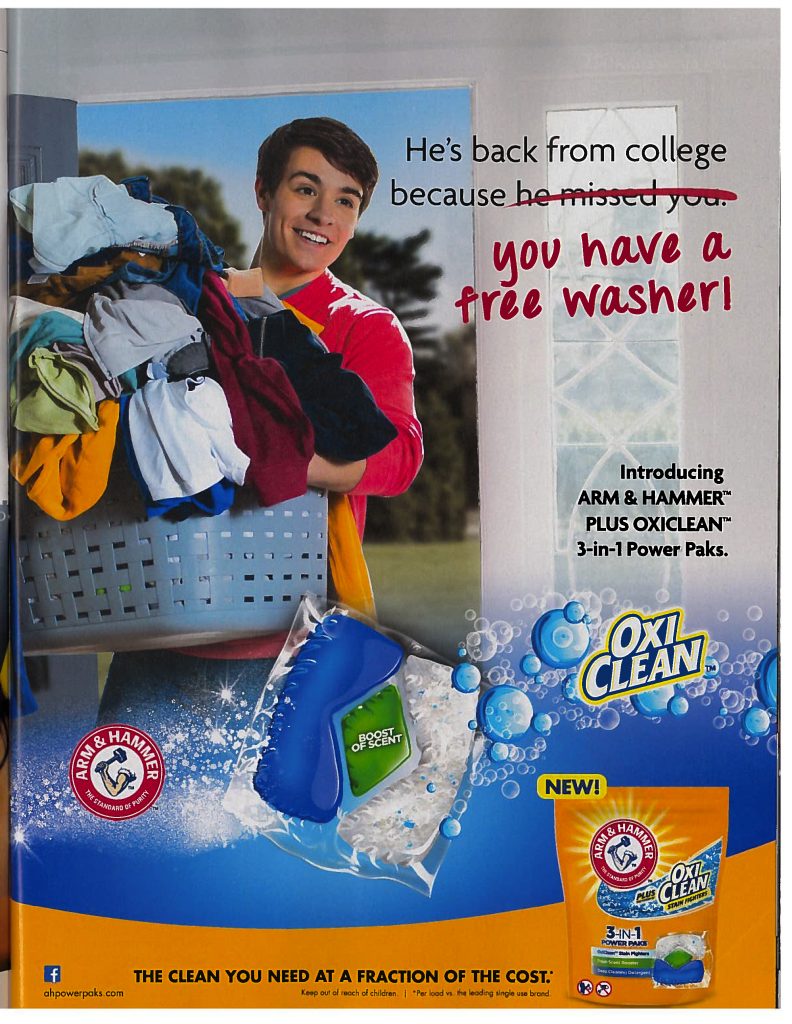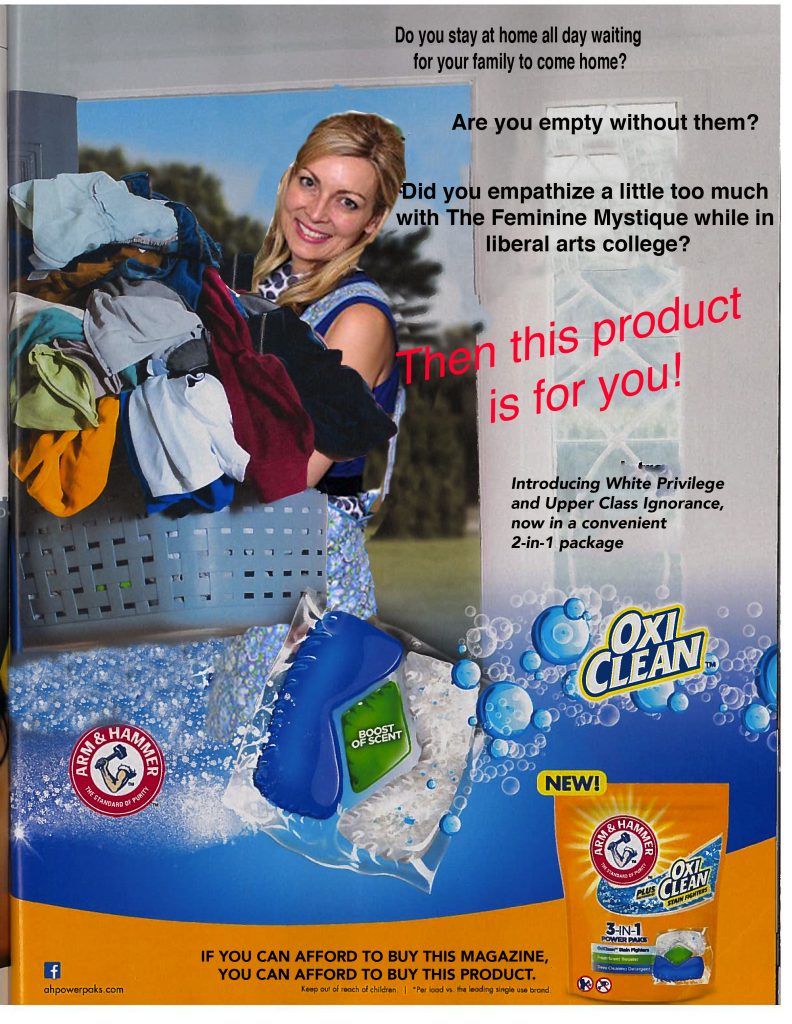Arm & Hammer Culture Jam

Original Arm & Hammer advertisement in the July 10, 2017 edition of People’s Magazine (scanned)
The Arm & Hammer advertisement that I chose for my Culture Jam, was scanned out of the July 10, 2017 People’s magazine. What is most interesting about this ad, beyond it’s assumed ideology, which I will talk about later, is the context of the magazine in which it lives. People’s magazine is notorious for their juicy celebrity exclusives stories (for example, exclusive pictures from celebrity weddings) and their stereotyped appeal to housewives and women alike. You will always find a People’s magazine at a hair salon, or a nail salon or anywhere women cluster and it is just assumed that women are the ones who read the magazine so the intended audience of the advertisement itself is women. When considering the context of People’s Magazine, it is also important to note the cost of the magazine, which is $6.99 CAD. People’s Magazine is not for lower class, it is made for middle to upper class women, who have time in their day to browse through magazines and do laundry, (i.e., housewives) and afford to spend $7 on a magazine instead of a meal.
Now, the ad itself is quite clearly trying to play on mother’s heartstrings by appealing to the homecoming of her beloved child. It can be assumed that the intended audience of the advertisement, are mothers who can afford to send their children to colleges and universities far away from home. The doorway that the son is walking into looks like a suburban upper-class home, in a sunny, tree-lined neighbourhood, which makes it clear that middle- to upper-class housewives are clearly the intended audience for the advertisement. This advertisement blatantly stereotypes the audience of People’s Magazine, aligning itself with the values that Betty Friedan and millions of other women fought hard to disassemble.

Jammed version of Arm & Hammer advertisement in the July 10, 2017 edition of People’s Magazine (scanned)
For my jammed version of the advertisement, I decided to put the intended audience right into the advertisement and play on it’s assumed stereotypes. The first, and most obvious change is the image of the son to a stereotypical suburban housewife, who I imaged would be People’s magazine’s preferred customer. She is still carrying the basket of laundry because by the standards the ad sets, it is obvious that she would be the one doing the laundry. I also chose this women specifically because although she is smiling, there is something about her face and eyes and makes her feel like she is trapped and her smile just isn’t quite authentic enough.
I then decided to change the tag lines as well, to enforce the ideology of the advertisement. First, I changed the bottom tagline that used to read, “the clean you need at a fraction of the cost,” to “if you can afford to buy this magazine, you can afford to buy this product.” This new tagline reminds us of the price of the magazine itself ($6.99 CAD!) and situates the woman at an economic advantage because if you can afford to buy magazines at that price then it is pretty likely that you can buy any cleaning product you want.
I also made the decision to change the sub tagline, which before read “Introducing ARM & HAMMER PLUS OXICLEAN 3-in-1 Power Paks,” to “Introducing White Privilege and Upper Class Ignorance, now in a convenient 2-in-1 package.” This tagline confronts the sociological issues represented in the advertisement.
Lastly, I made the decision to put questions up as the main tagline, almost like a classified ad, attempting to outline a criteria for the women who is expected to use this product. I used stereotypes of a housewife to define who the woman is, and who I thought Arm & Hammer and People’s Magazine expect to be seeing the advertisement. I feel like my jammed version of the advertisement is quite critical, but I mean for it to be critical of the companies and not critical of housewives or women. My jammed version of the Arm & Hammer advertisement should make the audience question how even the simplest of advertisement are still targeting a specific audience, and the context of those advertisements are often as equally important as the ad themselves.